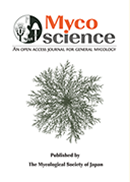Volume 52, Issue 2
Displaying 1-11 of 11 articles from this issue
- |<
- <
- 1
- >
- >|
Review
-
2011Volume 52Issue 2 Pages 83-90
Published: 2011
Released on J-STAGE: March 31, 2023
Download PDF (1015K)
Full Paper
-
2011Volume 52Issue 2 Pages 91-98
Published: 2011
Released on J-STAGE: March 31, 2023
Download PDF (289K) -
2011Volume 52Issue 2 Pages 99-106
Published: 2011
Released on J-STAGE: March 31, 2023
Download PDF (819K) -
2011Volume 52Issue 2 Pages 107-110
Published: 2011
Released on J-STAGE: March 31, 2023
Download PDF (183K) -
2011Volume 52Issue 2 Pages 111-118
Published: 2011
Released on J-STAGE: March 31, 2023
Download PDF (671K) -
2011Volume 52Issue 2 Pages 119-131
Published: 2011
Released on J-STAGE: March 31, 2023
Download PDF (1016K)
Short communication
-
2011Volume 52Issue 2 Pages 132-136
Published: 2011
Released on J-STAGE: March 31, 2023
Download PDF (133K) -
2011Volume 52Issue 2 Pages 137-142
Published: 2011
Released on J-STAGE: March 31, 2023
Download PDF (466K) -
2011Volume 52Issue 2 Pages 143-146
Published: 2011
Released on J-STAGE: March 31, 2023
Download PDF (151K) -
2011Volume 52Issue 2 Pages 147-151
Published: 2011
Released on J-STAGE: March 31, 2023
Download PDF (267K)
Note
-
2011Volume 52Issue 2 Pages 152-156
Published: 2011
Released on J-STAGE: March 31, 2023
Download PDF (200K)
- |<
- <
- 1
- >
- >|
